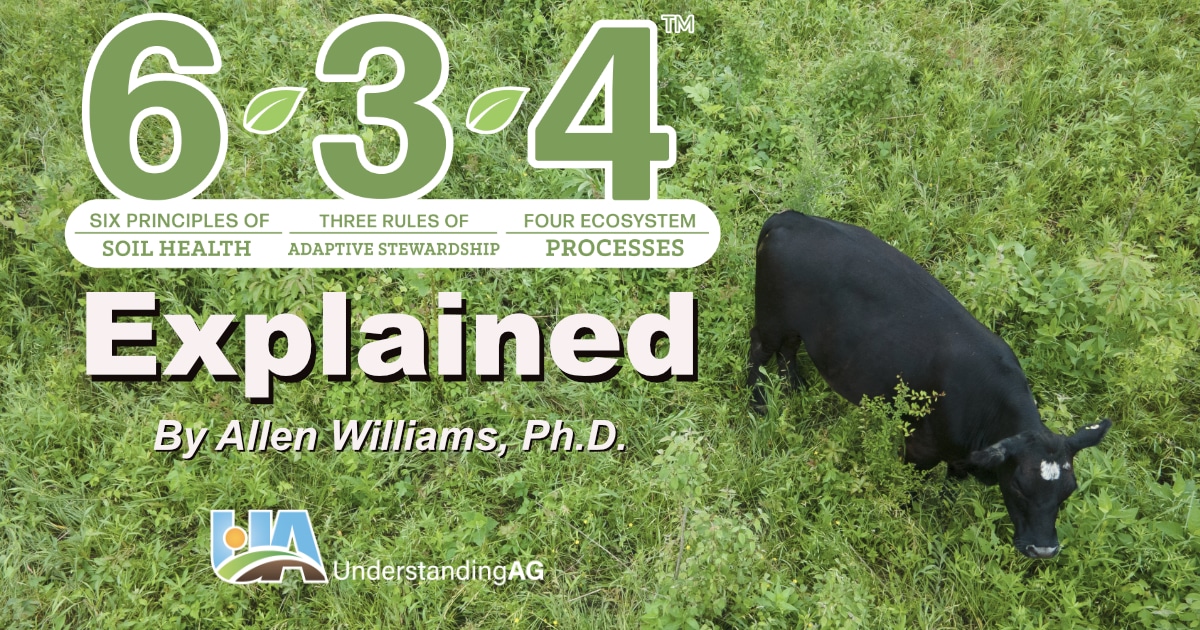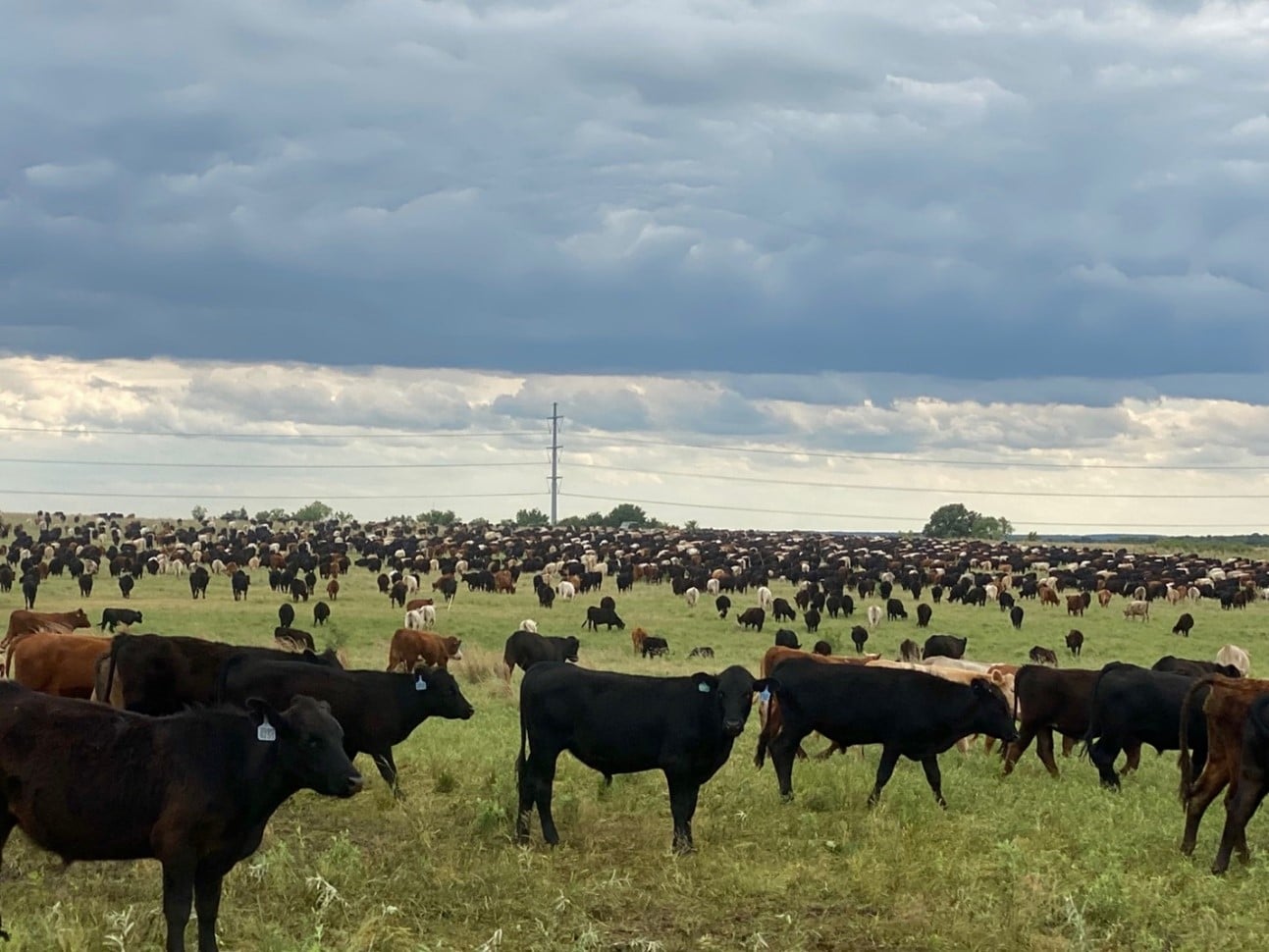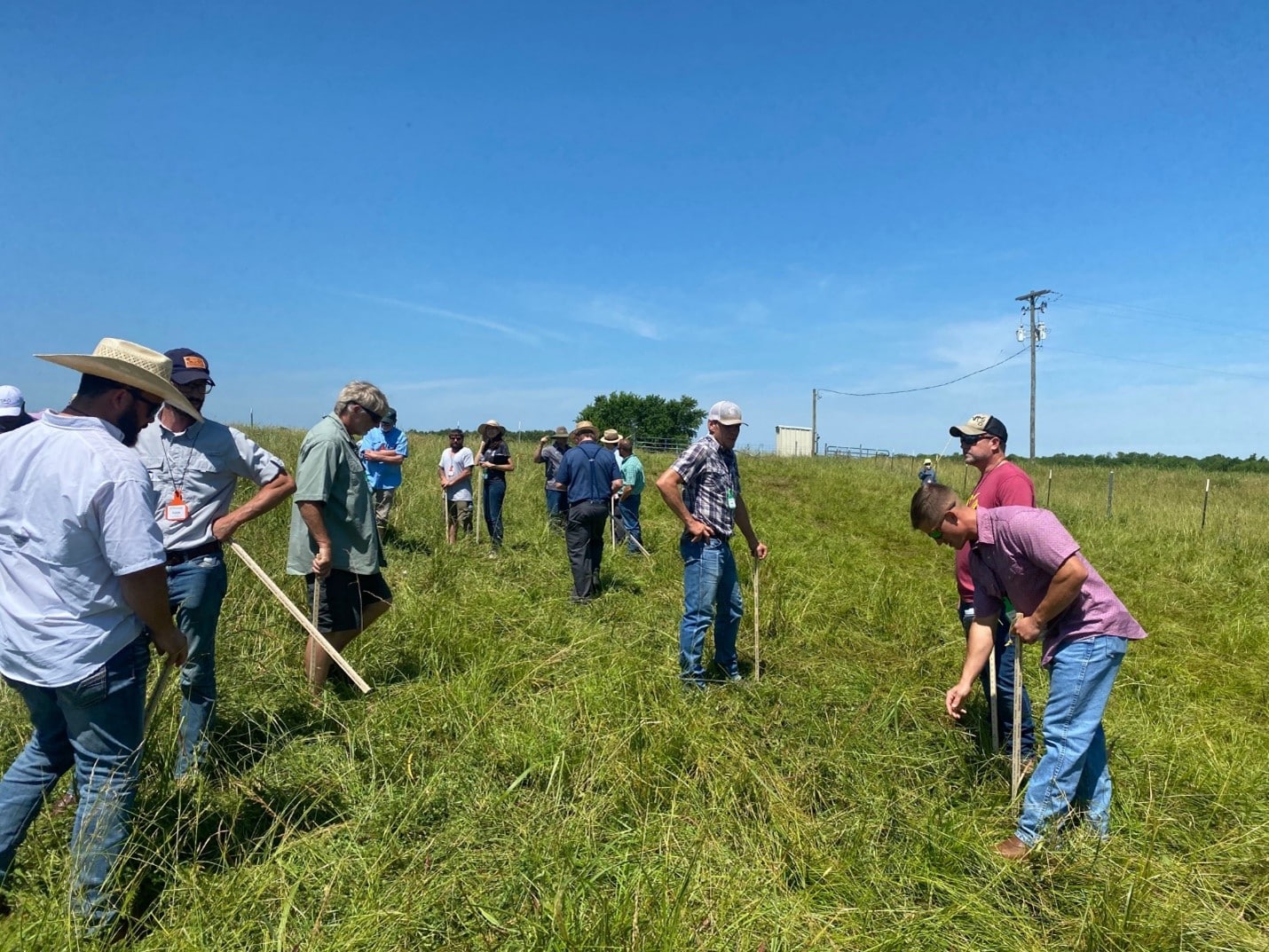
At Understanding Ag, the core of our teaching is centered on what we term the 6-3-4TM. This systemic regenerative approach contains the basic principles and rules that facilitate successful application and implementation of regenerative agriculture. Understanding Ag developed this system over the past several years and we have used it quite successfully in every corner of North America and in many other countries around the globe. The 6-3-4TM refers to the Six Principles of Soil Health, the Three Rules of Adaptive Stewardship, and the Four Ecosystem Processes.
It should immediately be noted that this is a highly adaptive approach and is not a prescriptive approach. In fact, the moment someone tries to make the 6-3-4TM prescriptive is the moment they are no longer adaptive and regenerative.
Six Principles of Soil Health:
All successful regenerative agriculture efforts start with and hinge on the degree to which farm managers implement the Six Principles of Soil Health. Developing a solid understanding of these principles and how best to apply them within your specific farming/ranching context is crucial.
The Six Principles are:
1. Context – Context is the most important principle and must be defined before applying the other principles. Context includes your production and financial goals and objectives, historical production factors, ecological parameters (both current and historical), community dynamics (family, neighbors, friends, vendors, lenders, etc.), and philosophical beliefs.
2. Minimize Disturbance – This includes minimizing disturbance of all types: tillage, synthetic, chemical, and manure applications. All forms of disturbance have the potential to harm our soil biology and physical structure. For example, all tillage damages soil structure, reduces water infiltration, reduces soil organic matter and carbon, and increases weed pressure. At times, one or more of these disturbances may be unavoidable, so a plan must be in place to minimize the impact of that disturbance in order to continue regenerative progress.
3. Armor on the Soil – Principally, keep the soil covered at all times. Nothing good happens when we have bare, exposed soil. Think of bare soil as our own skin. If we have exposed skin when it is very cold, we suffer. When we have exposed skin when it is hot, we get sunburned. Keeping the soil covered with a combination of living plants and plant residue protects soil temperature and moisture, keeps the soil microbes functioning and cycling nutrients, and progresses the regenerative process.
4. Diversity – Diversity is essential to making regenerative progress. Diversity includes diversity in plant species, soil microbial species, insects, birds and other wildlife. Monoculture and low-diversity systems significantly limit regenerative progress. It is simply not possible to make large strides in progress when diversity is greatly limited.
5. Living Roots Year-Round – Keeping living roots in the ground for as much of the year as possible supports soil microbial life and heightened activity. Living roots help build soil organic matter, enhance water infiltration and carbon sequestration. Living roots support all life, both below and above the soil surface. A lack of living roots will produce only negative compounding effects.
6. Livestock Integration – Virtually all land-based ecosystems in the world evolved through the influence of grazing, browsing and foraging ruminants. For the past several thousand years, this included a combination of wild and domesticated ruminants in many areas of the world. The very act of grazing or browsing stimulates heightened effects in soil biology and sets in motion a series of positive compounding and cascading effects.
Three Rules of Adaptive Stewardship:
The three rules of adaptive stewardship grazing are:
1. Rule of Compounding
2. Rule of Diversity
3. Rule of Disruption
The Rule of Compounding follows the concept that every management decision or practice applied creates a series of compounding and cascading effects that are either positive or negative in nature. Astute daily observation allows the practitioner to determine the compounding effects that are occurring and if adjustments need to be made relative to adaptive management. Careful observation on a routine basis allows the practitioner to develop a keen sense of intuition, which facilitates better management decisions that will create positive compounding effects.
Epigenetics, or the ability of environmental influences to affect the degree of gene expression in an individual organism (soil microbes, plants, cattle), are an integral part of compounding and cascading effects. Positive compounding effects result in positive epigenetic effects.
The Rule of Diversity follows the trend of nature to foster highly diverse ecosystems rather than monoculture or near-monoculture systems. Diversity refers to diversity in soil microbial species, in soil macro-organisms, plant species, beneficial insects, pollinators, birds and other wildlife, and cattle/crops. Monoculture practices, whether in crop or pasture production, perennial or annual, negatively impact ecosystem diversity and encourage negative compounding and epigenetic effects.
Highly diverse fields, whether annual or perennial, will have at least three major plant functional groups found in a grassland environment. These include grasses, legumes, forbs and woody species. Many of the forbs that grow in perennial pastures are often referred to as “weeds”but these forbs are a very important part of a complete ecosystem because they supply an abundant array of secondary and tertiary chemical compounds (phytochemicals) that are medicinal in nature and have natural anti-parasitic properties. In addition, forbes produce a distinct array of root exudates that attract a wider and more varied microbial population.
The work of Dr. Fred Provenza shows that animals provided with a broader array of plant species from which to forage are considerably healthier and perform better than cattle restricted to a more limited selection of plants (Recommended reading – Nourishment).
The Rule of Disruption refers to the fact that nature is extremely resilient and can recover from insults (challenges) quite well. Often, after insults, soil-health parameters are improved, productivity increases, and diversity is enhanced. Adaptive grazing, by definition, is not a rigid system, recipe, or formula. It is a flexible practice that allows for almost constant adjustment to fit conditions, goals and objectives. Grazing practices used in a rigid system will inevitably fail because they stymie both diversity and disruption and therefore create negative compounding effects over time.

It is important to note that every living cell and organism has a memory and responds to prior experiences accordingly. Soil microbes have a memory and respond to prior grazing or other management practices. Plant cells have a memory. Animal cells have a memory. If similar practices are employed year after year, then the memory in the cells of all these organisms responds by telling the organism that it does not have to gain resilience. It becomes accustomed to the practice and basically stagnates.
The cells in our bodies work the same way. If we use an athlete as an example, we know that no athlete can progress if they do the same exercise routine at the same intensity and duration over and over. The only way to progress is to challenge the mind and the body (challenging cellular memory) by significantly altering the exercise routine. That is the only way an athlete gets bigger, stronger, faster or gains greater endurance. It is also the only way that your soil microbes, plants, cattle will become more resilient.
The question becomes, how can we introduce planned disruptions on a routine basis? There are numerous disruptions that can be implemented in any given pasture or paddock on an annual basis to prevent stagnation of soil health parameters and the ecosystem itself. These planned disruptions include:
1. Altering stock densities on a routine basis. To do this properly requires some record keeping so that prior stock density in any given paddock is known. To elicit a positive response from nature, the stock density alteration must be of magnitude. For example, if the stock density in a paddock at the past grazing or grazing season was 20,000 lbs/acre, then increase the stock density to 50,000 lbs/acre or more with the next grazing. If it was 100,000 lbs/acre last grazing or grazing season, reduce the stock density to 50,000 lbs/acre or less with the next grazing.


2. Alter Paddock Configuration and Paddock Direction. The configuration of a paddock determines the way animals move through the paddock during a grazing event. By altering the configuration of the paddock periodically you influence a disruption. Similarly, if paddocks were going in one direction in a larger pasture the last time you grazed that pasture, alter their direction the next time you graze that same pasture.
3. Alter time of rotations through paddocks. If you routinely begin grazing each spring in paddock A, then move to paddock B, C, D, and E, next spring begin grazing with paddock D and move through that pattern for a year.
4. Alter season/month of the year for first or last grazing in each paddock. For example, if you normally graze paddock C in May and July of each year, considering grazing in April and June. Simply altering the time of year a paddock is first grazed or last grazed can profoundly impact the response of both the soil microbial population and the latent seed bank.
5. Alter grazing forage height on and off a paddock. If you routinely place cattle on a paddock when the forage has an average height of 14 inches and graze down to 6 inches, alter the grazing height on or off. For example, start grazing at 8-10 inches and take down to six inches. Or, start grazing at 18-20 inches and take down to 8-12 inches.
6. Alter livestock species order when grazing a paddock. If you graze/forage multiple livestock species, then occasionally alter the order that you move the individual species through the paddocks. If you normally start with cattle, then sheep or chickens or pigs, shake up that’s species order from time to time.
7. Alter rest-rotation periods in each paddock. If you normally use a rest-rotation period of 30-40 days between paddocks, periodically give paddocks an extra-long rest period. Again, do this at a magnitude difference. That means providing a rest period of 80 days or greater in any given grazing season. We have found that allowing extra rest periodically makes a profound difference. Many pastures or paddocks can benefit from extended rest periods of six months to a year in more temperate regions as a “re-start” to soil biology and plant species diversity. In semi-arid and arid regions this may require an initial rest period of 14 months to over two years.
8. Planned Burns – Prescribed burns are a valid disruption. Burning can produce significant stimulus to soil biology and the latent seed bank. Incorporating this strategy from time to time in any particular area or pasture can produce profound results. However, be careful that burns are not implemented too often within any given area. We recommend burns only every 5-10 years in any specific pasture, but only if needed.
9. Bale Grazing – Purposeful bale grazing can be a significant and positive disruption that stimulates soil microbial populations and applies a lot of fertility in a short period of time. Bale grazing can be done in the winter or at any time of the year. It is especially helpful where you have soils that are bare and exposed or where you have concentrated patches of plants you want to control (i.e., blackberry, thistle, cogon grass, buckbrush, ash, etc.).
10. Combinations of Single Disruptions – Combining disruptions can produce exponential results and allows for more than 100 possible disruptions over a period of time. As an example, you can alter stock density while altering paddock configuration and direction, then provide a longer than normal rest period. That is four different disruptions combined into a single grazing event timetable.
Four Ecosystem Processes:
The Four Ecosystem processes are free to us every day. In a time where practically all agricultural input costs have risen significantly, we need to be taking advantage of what nature provides to us each and every day. These ecosystem processes are:
1. Energy Cycle – The energy cycle is simply sunlight captured by plants to drive photosynthesis. We may say that we do this every day because we have plants growing and we have sunlight. However, we need to consider if we maximizing the capture of that sunlight or if we are losing much of it through photosynthetic leakage. If our pastures are routinely grazed short, we are losing a lot of sunlight (leakage). If we have low-diversity pastures, we are losing sunlight through leakage. Highly diverse pastures contain plants of differing heights and differing leaf architecture. That allows for maximum sunlight capture and minimal leakage.
2. Water Cycle – How well do our soils capture and infiltrate water from rainfall, snowmelt or irrigation? Are we replenishing our springs and aquifers? Do we have too much water and wind erosion occurring? Good soil water infiltration and retention only happens when we have good soil biology.
3. Mineral Cycle - The mineral cycle, also called the nutrient cycle, only works effectively when we have good soil biology and microbiology working for us. Nutrients come from many sources, including the soil itself, rocks, rain, atmosphere, animal manure and urine, dead and decaying plant materials, and dead and decaying microbes and macro-organisms.
4. Community Dynamic – This can also be referred to as diversity. The greater the diversity that exists in our ecosystem, the better everything functions. This includes plant, insect, bird and other wildlife species diversity.
Summary
The 6-3-4TM is the best and most proven way to make continuous regenerative progress. Planned, purposeful and intentional application of the Six Principles and the Three Rules allows us to optimize the Four Ecosystem Processes and take advantage of nature’s free resources. No matter where you are located and no matter what your agricultural enterprises may be, success hinges on how well we capture and utilize the resources that have been in place since the beginning of time.
